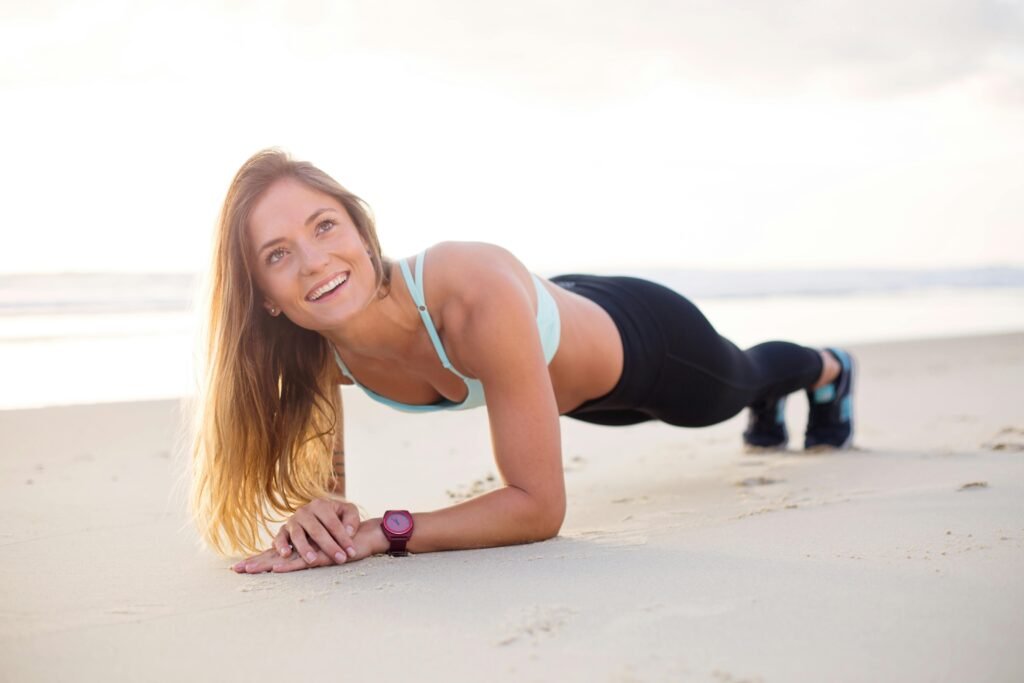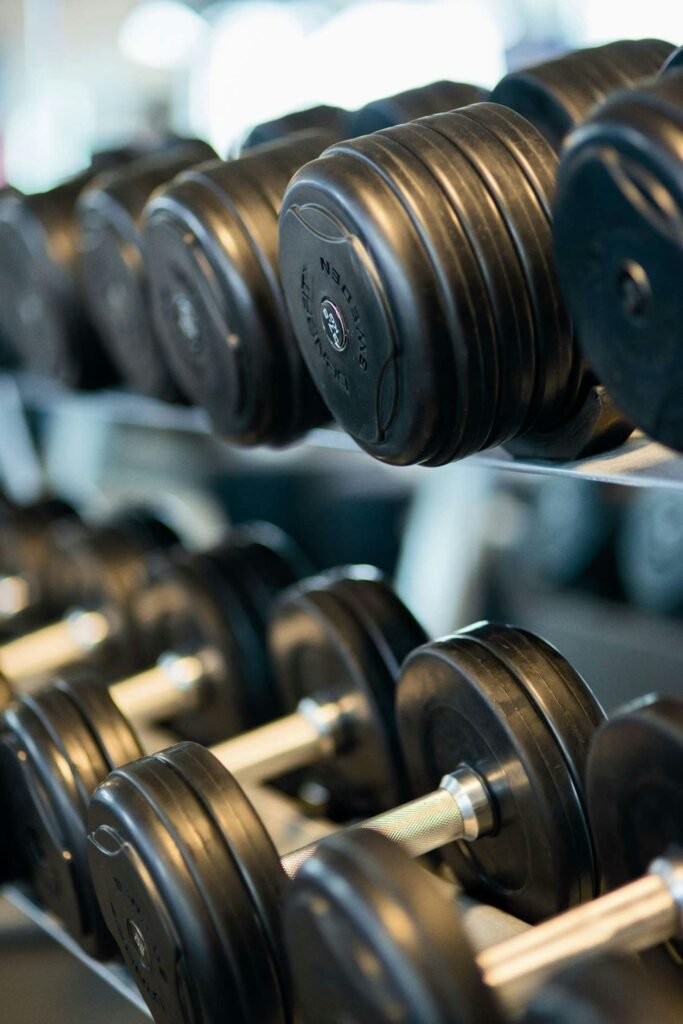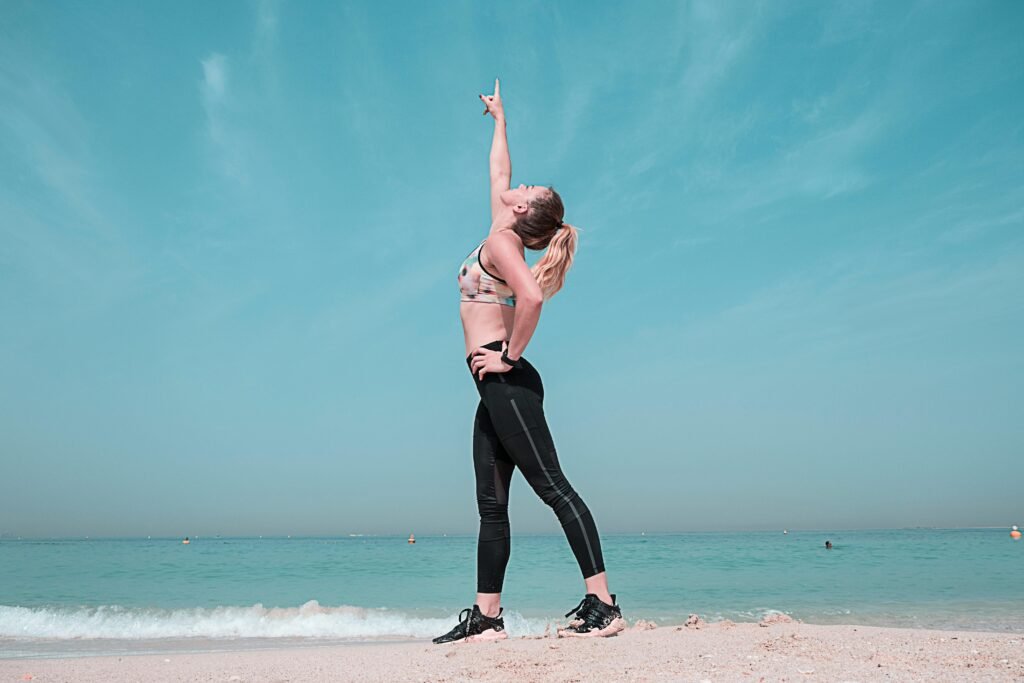
Setting up a home gym can be a daunting task, especially for beginners. With so many equipment options and conflicting advice, it’s easy to feel overwhelmed. However, creating an effective home gym doesn’t have to be complicated. In this article, you will discover practical tips and suggestions on how to set up a home gym that suits your needs and helps you achieve your fitness goals. Whether you’re a complete novice or starting fresh after a long break, this guide will provide you with the knowledge and confidence to create a workout space that motivates and empowers you.

This image is property of images.pexels.com.
Find more product like these on Amazon!
Choosing the Right Space
Assessing available space
When creating a home gym, it’s important to start by assessing the available space in your home. Look for an area that is well-suited for working out and has enough room to accommodate your exercise equipment. The space should be free from obstructions and provide enough clearance for you to move around comfortably. Whether it’s a spare bedroom, a corner of your living room, or even a dedicated garage space, find a spot that you can make your own exercise sanctuary.
Considering ventilation and temperature control
Another factor to consider when choosing your home gym space is ventilation and temperature control. It’s essential to have proper airflow to keep the space cool and fresh during your workouts. Look for areas with windows or install a fan or air conditioning to keep the air circulating. Ensuring a comfortable temperature will help you stay motivated and prevent overheating during intense workouts.
Determining the flooring
Selecting the right flooring for your home gym is crucial to ensure safety and comfort. Opt for a flooring option that suits your workout needs and minimizes the risk of slips and injuries. Exercise mats or specialized gym flooring are excellent choices to protect your joints and provide a stable surface for various exercises. Consider the type of workouts you’ll be doing and choose flooring that is durable, easy to clean, and absorbs impact.
Clearing clutter and creating an organized environment
Before setting up your home gym, take the time to clear any clutter and create an organized environment. Remove any unnecessary items or furniture from the space to create a clean and open area for your workouts. Having a clutter-free zone will not only make your workouts more enjoyable but also reduce the risk of accidents or injuries. Invest in storage solutions like shelves, bins, or hooks to keep your equipment organized and easily accessible, making your home gym both functional and visually appealing.
Essential Equipment
Exercise mat or flooring
An exercise mat or suitable flooring is one of the most essential pieces of equipment for any home gym. It provides a cushioned and non-slip surface for workouts such as yoga, bodyweight exercises, or stretching. Look for mats that are thick enough to provide adequate support for your joints and have a non-slip surface to prevent accidents during dynamic movements.
Resistance bands or dumbbells
Resistance bands and dumbbells are versatile and compact equipment options that offer a wide range of strength training exercises. They take up minimal space and are perfect for beginners who want to start building strength without investing in bulky weightlifting equipment. Resistance bands come in different resistance levels, allowing you to gradually increase the challenge as you progress. Dumbbells, on the other hand, provide a more traditional weightlifting experience and can be easily adjusted to accommodate different fitness levels.
Jump rope or skipping rope
A jump rope or skipping rope is a simple and effective cardiovascular exercise tool that can be used in any home gym. It is an excellent option for those looking to burn calories, improve their cardiovascular health, and enhance coordination. Jumping rope can be done in small spaces and offers a fun and challenging workout that can be easily customized to your fitness level.
Adjustable weight bench
For those interested in more advanced strength training exercises, an adjustable weight bench is a valuable addition to a home gym. It allows for a variety of exercises like chest presses, shoulder presses, and tricep dips. Look for a bench that can be adjusted to different incline and decline positions to target different muscle groups effectively.
Pull-up bar or suspension trainer
If you have enough ceiling height or a sturdy door frame, a pull-up bar or suspension trainer can provide an excellent upper body and core workout. Pull-ups and suspension exercises target multiple muscle groups and can help you develop strength and improve overall fitness. Choose a pull-up bar that can be easily installed and supports your body weight safely, or opt for a suspension trainer that uses adjustable straps for versatile exercises.
Exercise ball or stability ball
An exercise ball, also known as a stability ball, is a versatile and fun addition to any home gym. It can be used for core-strengthening exercises, balance training, and even as a substitute for a weight bench in some exercises. Look for a ball that is the appropriate size for your height and weight, and ensure it is made of durable, burst-resistant material for safety.
Cardiovascular Workouts
Investing in a treadmill or stationary bike
For those who enjoy running or cycling, investing in a treadmill or stationary bike can be a game-changer for cardiovascular workouts at home. A treadmill provides a convenient and safe way to run or walk, regardless of the weather outside. Look for a treadmill with adjustable speed and incline settings to customize your workout intensity. Alternatively, a stationary bike offers a low-impact option for cardiovascular exercise, making it suitable for those with joint issues.
Choosing a compact elliptical trainer
If space is limited, a compact elliptical trainer is a fantastic option for an effective cardiovascular workout. These machines provide a low-impact workout that targets both the upper and lower body. Look for models that offer adjustable resistance levels and stride length, allowing you to customize your workout to your fitness level and preferences.
Using a jump rope for cardio
As mentioned earlier, a jump rope is a fantastic cardio tool that can be used in small spaces. Not only does it provide an effective calorie burn, but it also improves coordination, agility, and cardiovascular endurance. Beginners can start with basic jump rope techniques and gradually progress to more advanced moves like double unders or crisscrosses.
Incorporating high-intensity interval training (HIIT)
High-intensity interval training (HIIT) is a popular and time-efficient cardio workout that can be easily incorporated into your home gym routine. It involves alternating short periods of intense exercise with brief recovery periods. HIIT workouts can be done with minimal equipment or bodyweight exercises, making it suitable for any fitness level. Look for HIIT workouts or create your own by combining exercises like burpees, squat jumps, mountain climbers, and high knees.
Strength Training
Understanding the importance of strength training
Strength training is a crucial component of any well-rounded fitness routine. It helps build lean muscle mass, increases bone density, boosts metabolism, and enhances overall strength and function. Incorporating strength training exercises in your home gym can provide numerous benefits, from improving aesthetics to enhancing athletic performance and preventing age-related muscle loss.
Starting with bodyweight exercises
For beginners, bodyweight exercises are an excellent starting point for strength training. They require no equipment and can be done anywhere, including your home gym. Exercises like squats, lunges, push-ups, planks, and burpees engage multiple muscle groups and help develop a strong foundation. Focus on mastering proper form and gradually increase the number of repetitions or the intensity as you progress.
Adding resistance bands or dumbbells
Once you feel comfortable with bodyweight exercises, it’s time to introduce additional resistance. Resistance bands or dumbbells are perfect for this stage, as they provide a portable and versatile means of adding resistance to your workouts. Resistance bands can be used to target specific muscles or assist with stretching, while dumbbells offer a wide range of exercises to challenge your entire body.
Progressing to weightlifting equipment
As you become more experienced and comfortable with strength training, you may consider investing in weightlifting equipment such as barbells, weight plates, or a power rack. These pieces of equipment allow for more advanced exercises like squats, deadlifts, bench presses, and overhead presses. Ensure proper form and gradually increase the weight as your strength and technique improve. If you choose to include weightlifting in your home gym, be sure to practice proper safety measures, such as using collars on weight bars and having a spotter when necessary.
Incorporating compound exercises for efficiency
Compound exercises are multi-joint movements that engage multiple muscle groups simultaneously. They provide efficient and effective full-body workouts, making them ideal for home gyms with limited equipment or space. Exercises like squats, deadlifts, lunges, bench presses, overhead presses, and rows are examples of compound exercises that target multiple muscle groups and improve overall strength and coordination.

This image is property of images.pexels.com.
Flexibility and Mobility
Including a yoga mat for stretching
Flexibility and mobility are essential components of a well-rounded fitness routine. Including a yoga mat in your home gym setup provides a designated area for stretching exercises and yoga flows. Stretching helps improve flexibility, range of motion, and joint health, while yoga incorporates both physical and mental aspects, promoting relaxation and stress relief.
Exploring yoga or Pilates routines
Yoga and Pilates routines are excellent options for improving flexibility, balance, and core strength. They require minimal equipment and can be done in the comfort of your home gym. Many online platforms offer guided yoga or Pilates classes that cater to different experience levels and focus areas. Take advantage of these resources to enhance your flexibility and overall well-being.
Using foam rollers or massage balls for myofascial release
Foam rollers and massage balls are valuable tools for myofascial release, a self-massage technique that helps relieve muscle tension and improve muscle recovery. These tools target trigger points and knots in the muscles, aiding in reducing muscle soreness and increasing mobility. Incorporate foam rolling or using massage balls as part of your warm-up or cool-down routine to enhance your flexibility and decrease the risk of injuries.
Incorporating dynamic stretches and mobility exercises
Dynamic stretches and mobility exercises are movements that actively stretch and warm up muscles, helping to improve joint flexibility and prevent injuries. These exercises involve controlled movements that take your joints through their full range of motion. Incorporate exercises like leg swings, arm circles, shoulder dislocations, hip circles, and torso twists into your warm-up routine to prepare your body for more intense workouts.
Functional Training
Incorporating functional training exercises
Functional training exercises mimic or simulate movements that you use in everyday life or athletic activities. They train your muscles to work together and improve overall stability, balance, and coordination. Include exercises like squats, lunges, pushes, pulls, and twists that engage both the upper and lower body to enhance functional strength and movement patterns.
Using balance boards or wobble cushions
Balance boards or wobble cushions are valuable tools for improving balance and stability. They challenge your core muscles and proprioception, which is your body’s awareness of its position in space. Standing or performing exercises on balance boards or wobble cushions engages your stabilizing muscles and helps develop better balance, coordination, and postural control.
Adding resistance bands for functional movements
Resistance bands can be used to add an extra challenge to functional movements. They provide variable resistance and allow you to target specific muscle groups or simulate movements that require strength and stability. Incorporate resistance bands into exercises like squats, lunges, rows, or overhead presses to intensify the workout and make it more functional.
Including medicine balls or kettlebells
Medicine balls or kettlebells are excellent additions to a home gym for functional training exercises. They are versatile pieces of equipment that can be used for both strength and cardio workouts. Medicine balls can be thrown, caught, or used in various dynamic movements that engage the entire body. Kettlebells, on the other hand, offer a unique shape that challenges grip strength and allows for fluid and explosive movements like swings, snatches, and Turkish get-ups.

This image is property of images.pexels.com.
Audio and Visual Setup
Installing speakers or a sound system
Creating a motivating and energetic atmosphere in your home gym is essential for a enjoyable workout experience. Consider installing speakers or a sound system to play your favorite workout music. Good quality sound can enhance your workout performance and provide the necessary motivation to push through challenging exercises.
Creating a motivational workout playlist
A well-curated workout playlist can make a significant difference in your energy and motivation during exercise. Compile a playlist of upbeat and inspiring music that gets you in the right mindset for your workouts. Include songs that match the intensity of your exercises or that empower you to push harder and achieve your fitness goals.
Setting up a TV or monitor for fitness videos or virtual classes
If you enjoy following workout routines or attending virtual fitness classes, consider setting up a TV or monitor in your home gym. Many fitness platforms offer on-demand workout videos or live classes that you can stream and follow along with. Having a larger screen dedicated to fitness-related content can make your workouts more engaging and help you stay motivated throughout your sessions.
Safety Measures
Ensuring adequate lighting
Proper lighting is crucial for maintaining a safe and enjoyable home gym environment. Make sure your home gym space is well-lit, allowing you to see clearly during exercises and preventing accidents. Natural light from windows is ideal, but if that’s not an option, install bright LED lights or adjustable lighting fixtures to create a well-lit space for your workouts.
Installing mirrors for proper form and posture
Mirrors are valuable tools in a home gym as they allow you to observe and correct your form and posture during exercises. They help you maintain proper alignment, prevent injuries, and ensure you’re engaging the correct muscle groups. Install mirrors strategically in your home gym space, such as across from the weightlifting area or stretching zone, to maximize their effectiveness.
Having a first aid kit readily available
Safety should be a top priority in any fitness setting, including your home gym. Keep a well-equipped first aid kit readily available in case of any minor injuries or accidents. Ensure the kit includes essentials like band-aids, antiseptic solution, adhesive tape, elastic bandages, and ice packs. Familiarize yourself with basic first aid procedures to handle any potential injuries effectively.
Consulting a fitness professional for guidance
While setting up a home gym can be an exciting endeavor, it’s important to seek professional guidance, especially if you’re new to fitness. Consulting a fitness professional can help you create a workout plan tailored to your goals and abilities. They can provide guidance on proper exercise form, intensity, and progression, ensuring your workouts are safe and effective.
Tracking and Monitoring Progress
Using fitness trackers or smartwatches
Fitness trackers or smartwatches are handy tools for monitoring your progress and staying motivated. They provide valuable data on metrics like heart rate, steps taken, calories burned, and workout duration. By tracking your fitness metrics, you can set goals, monitor your progress, and make informed decisions about your training routine.
Maintaining a workout log
Keeping a workout log is an excellent way to track your exercises, weights used, and repetitions performed. It allows you to see your progress over time and helps you structure your workouts for optimal results. A workout log also serves as a motivational tool, as you can look back and see how much you have accomplished.
Tracking body measurements and progress photos
In addition to tracking your workouts, consider measuring your body to track changes in your physique. Measurements like weight, body fat percentage, waist circumference, and hip circumference can provide valuable insight into your progress beyond just looking at the scale. Taking progress photos regularly can also help you visually see changes in your body composition.
Setting achievable goals
Setting realistic and achievable goals is crucial for maintaining motivation and staying on track with your fitness journey. Whether it’s increasing strength, losing weight, or improving cardiovascular endurance, setting specific, measurable, attainable, relevant, and time-bound (SMART) goals will help keep you focused and accountable. Break down larger goals into smaller milestones to celebrate your achievements along the way.
Maintenance and Cleaning
Regularly cleaning and disinfecting equipment
Maintaining a clean and hygienic home gym is important for your health and safety. Regularly clean and disinfect your exercise equipment, especially items that come into direct contact with your skin or body fluids. Use appropriate cleaning products and follow manufacturer instructions to ensure the equipment remains in good condition and free from germs.
Checking for wear and tear
Regularly inspect your exercise equipment for any signs of wear and tear. Check for loose or damaged parts, frayed cables, or worn-out padding. Address any issues promptly to prevent accidents or injuries. If necessary, consult a professional for repairs or replacement of damaged equipment.
Replacing worn-out or damaged equipment
If any equipment in your home gym becomes worn-out or damaged beyond repair, it’s important to replace it promptly. Using faulty equipment can lead to accidents and injuries. Stay proactive and ensure that your home gym is equipped with safe and functioning exercise equipment at all times.
Keeping the space tidy and organized
Maintaining an organized home gym space not only creates a visually appealing environment but also reduces the risk of accidents or injuries. Regularly tidy up after workouts, putting away equipment, and cleaning up any debris or sweat. Keep your storage solutions organized and ensure that everything has a designated place. A clean and organized home gym space will contribute to a positive and effective workout experience.

